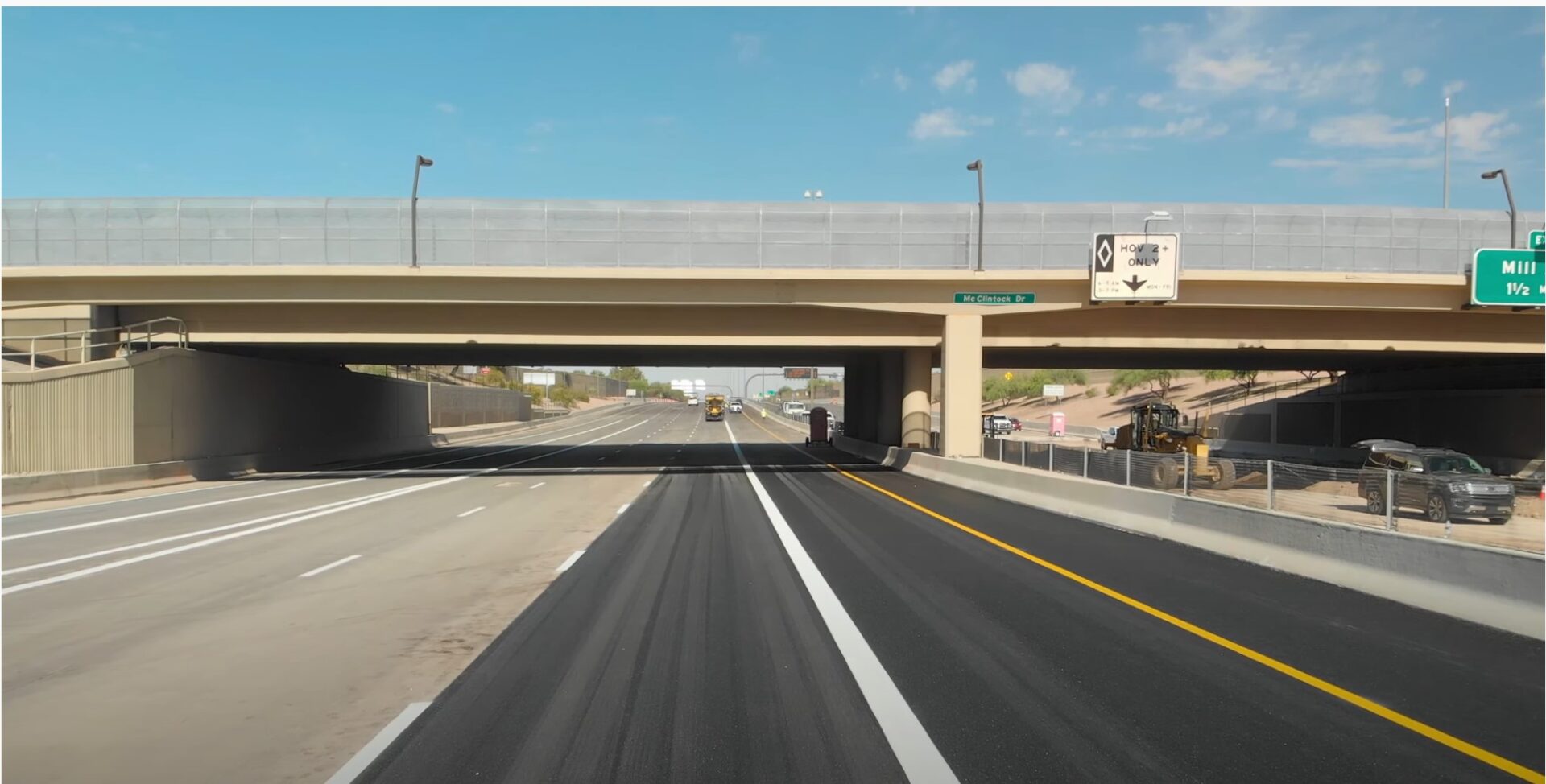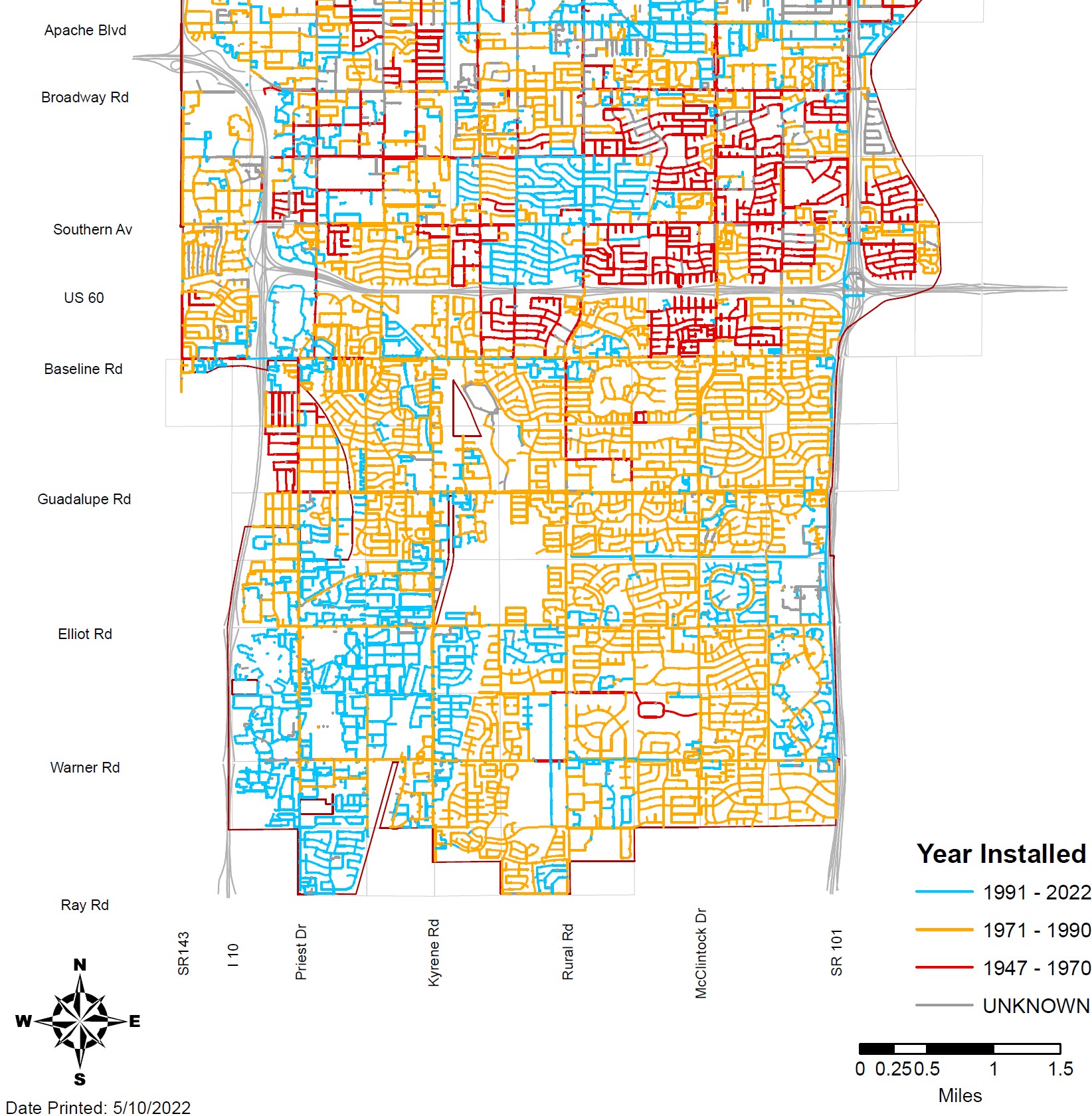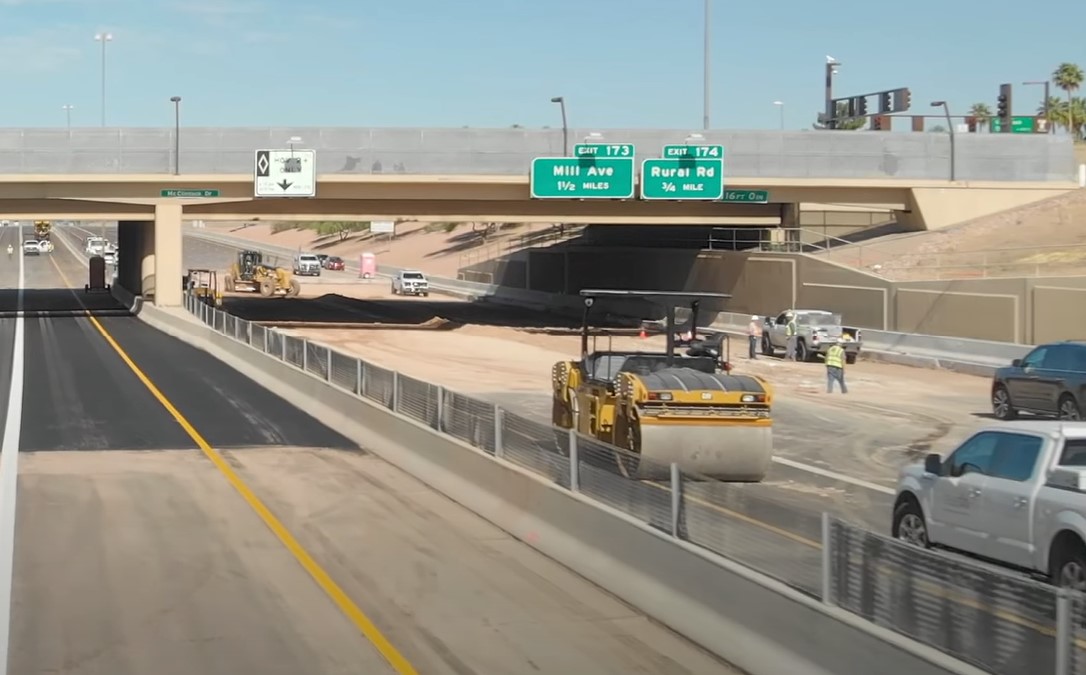
The recent gusher on the edge of South Tempe at U.S. 60 and McClintock Drive raised the disquieting specter of a similar water-main break flooding nearby residential neighborhood and damaging homes.
If it happened there, what are chances of it happening a couple of miles south?
Slim, according to Tempe officials.
City water mains generally follow major arterial streets and do not go into residential neighborhoods, according to Mark Weber, Tempe interim deputy municipal utilities director.
Water-delivery pipelines into subdivisions generally are 6-inch to 8-inch distribution lines. The water main that ruptured on May 7 and caused traffic nightmares while U.S. 60 was shut down for repairs was a 24-inch main, which continues south on McClintock to Guadalupe Road, where it connects with a larger line that comes out of Tempe’s South Water Plant south of Guadalupe at Price.
That’s not to say that there might not be a water leak in a neighborhood.
There have been 1,100 of them in the system since 1998 when Tempe began tracking breaks.
“So we have a number of breaks every year,” Weber said. “We have had some sporadic breaks in South Tempe, but the majority of the breaks are north of Baseline and primarily north of the 60, and the breaks we have had are in our smaller lines.
“It’s pretty normal for utilities across the nation to have breaks, depending on the age of the pipe, the materials in the system and when it was installed.”
The break in the 24-inch transmission line behind a retaining wall near the top of the McClintock Drive westbound off-ramp at U.S. 60 was Tempe’s first on a major pipeline, city officials say. They still do not know what caused the cast-iron pipe to fail, nor do they have an estimate of the cost to repair it.
South Tempe, comprising newer neighborhoods, have primarily ductile-iron delivery pipes, the newest type in the system. The oldest pipes in the Tempe system are cast iron. Then came asbestos-cement pipes.
Its entire water system is about 860 miles of pipes, about 50 miles of which are big transmission mains like the one that recently failed.
SOUTH TEMPE WATER PIPE AGES

Monitoring every inch of the system is daunting, but the city, acknowledging that records of the oldest pipes are sketchy, eight years ago implemented an identification and replacement program. So far, 38 miles of pipelines have been replaced.
“We have a replacement program on our distribution system, which is different from the pipeline that broke under the freeway,” Weber said, referring to the smaller delivery pipes in neighborhoods. “Our replacement program is concentrated on those pipelines because that’s where all of the breaks have been that we consider natural breaks, in other words due to age and material.”
So it’s unlikely that anyone will be body-surfing down a street in, say, Warner Ranch.
The majority of the 1,100 breaks have been in cast-iron pipes, the oldest in Tempe that represent about 21 percent of its system but account for about 75 percent of the breaks, Weber said.
“We primarily look at break history, where they occur,” Weber said. “As the city develops, the developers build the water lines and then turn them over to the city. Generally, if one part of the system in a neighborhood goes bad, then we look at that whole neighborhood as a replacement project because it was built at the same time.”
Major transmission lines are a different story.
“We are in the planning stages of doing an assessment where we actually put instrumentation into the lines so we can determine the structural condition of the transmission mains like the one under the 60 that broke,” Weber said. “In order to do that we have to build access into the pipes, so that’s going to take some time to get into all of the pipes to structurally assess all of them.”

While the line at McClintock and U.S. 60 was torn up, it received the new technology, according to Weber. If it failed in that spot, the city wants to know if it is vulnerable elsewhere.
“We just sent the first instrument through (on May 17) so we can see the condition of that,” he said. “And there is additional instrumentation that’s coming to look at a different part of the pipe.”
The newly installed equipment includes a camera as well as electromagnetic instrumentation that looks at the steel in the 50-year-old pipe, which Weber says typically has a life expectancy of about 75 years.
“Our transmission-main assessment includes a detailed inventory of exactly what types of pipe we have,” Weber said. “We didn’t have the best records over the years so we don’t actually know specifically the exact details of every single pipe. We will assess each of those individually.
“This transmission line is the first one to break. We’re not sure exactly what happened yet and we’re not going to speculate.”
Tempe has worked with Arizona Department of Transportation to repair the flood-damaged freeway. Eastbound lanes reopened May 15. More-seriously damaged westbound lanes reopened May 23. ADOT earlier declared the McClintock Drive overpass to be structurally sound.
Concrete was poured by Tempe-hired contractors to reconstruct the more-seriously damaged westbound lanes, according to Chris Kabala, principal civil engineer for Tempe. About 34,000 square feet of the flood-damaged roadway was removed.
Drivers had to make substantial detours for more than two weeks while westbound lanes were closed from McClintock Drive to Loop 101.
“We clearly know that this is a very big challenge if you’re commuting back and forth,” Tempe Mayor Corey Woods said. “We know this is absolutely an inconvenience. But at the end of the day, I think people have been very understanding of the fact that, unfortunately, sometimes things like this happen.”
Contractors hired by Tempe worked with ADOT staff, surveying areas beneath the freeway pavement to determine if soil shifted due to pressure from water released by the broken water main. They wanted to ensure the stability of the ground and to ensure the structural integrity of the McClintock Drive overpass.
ADOT and Tempe are repurposing the old concrete and asphalt roadway materials that were torn away to make repairs as fill material in ADOT’s Interstate 10 Broadway Curve Improvement Project, which includes widening the freeway from Ray Road to the Interstate 17 split near downtown Phoenix and adding pedestrian bridges.
“Sustainability is very important to the city of Tempe,” Kabala said. “We are glad that this material is being used over here and not being shipped somewhere to a landfill.”


